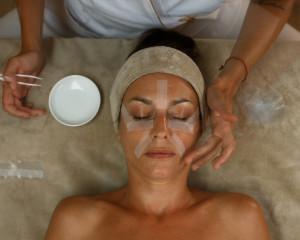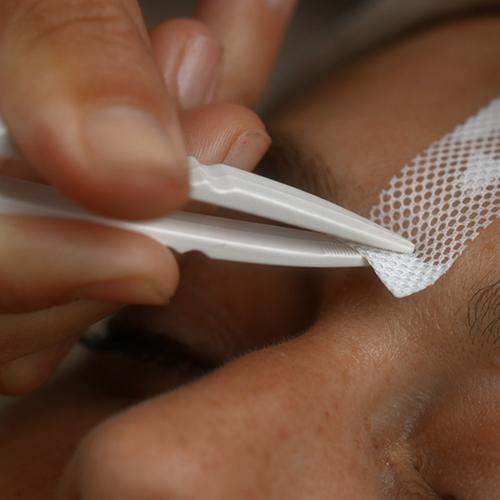 Our culture has a desperate obsession with youth. That’s not news, obviously – pick up any magazine, turn on the TV or radio, and you’ll be lucky to get five minutes before the newest anti-aging technology is thrown in your face. Though I believe in aging gracefully, I admit I’m still susceptible. I’ve tried some of the less expensive, more natural treatments, such as essential oil-based solutions, but I don’t think I’ll ever be willing to shell out big bucks to delay the inevitable – plus, Botox makes people look scary. I do find it interesting, however, to follow the development of new technologies that promise to restore that precious youthful glow.
Our culture has a desperate obsession with youth. That’s not news, obviously – pick up any magazine, turn on the TV or radio, and you’ll be lucky to get five minutes before the newest anti-aging technology is thrown in your face. Though I believe in aging gracefully, I admit I’m still susceptible. I’ve tried some of the less expensive, more natural treatments, such as essential oil-based solutions, but I don’t think I’ll ever be willing to shell out big bucks to delay the inevitable – plus, Botox makes people look scary. I do find it interesting, however, to follow the development of new technologies that promise to restore that precious youthful glow.
Like every other industry, 3D printing has made its way into the beauty business; not only does it have the potential to preserve life for much longer than ever before, but it could keep us looking great well into our later years. At least, that’s what companies like Biologique Recherche claim. Much like Radara’s 3D printed skin patches, Biologique Recherche’s “Second Skin” treatment utilizes hyaluronic acid to hydrate and plump the skin, purportedly removing wrinkles and fine lines in the process.
Second Skin uses a process called electrospinning, which is a 3D printing-like technique that creates solid fibers out of liquid solution. A technician feeds pure hyaluronic acid, a naturally occurring compound in the skin, into an electrospinner, which converts it to nanofibers that are then printed out in strips. Those strips, customized to the shape of the client’s face, are then applied to the face, where they actually dissolve right into the skin. It literally is a “second skin”; hyaluronic acid, along with collagen, elastin and proteoglycans, forms the substance of the dermis. The substance, which holds 1,000 times its weight in water, is a critical component in moisture retention – and, as every anti-aging product will remind us, moisturizing is key for a youthful complexion.“When topically applied, Hyaluronic Acid forms a continuous elastic film over the skin,” explains skin care expert Vicki Morav. “This film is permeable to cutaneous exchanges, retaining moisture and thereby contributing to maintaining good levels in the stratum corneum irrespective of ambient air humidity. This active ingredient also plays a crucial role in the cellular migration, bonding stimulation and proliferation processes involved in wound regeneration, reconstruction or healing. Hyaluronic acid significantly improves the skin’s healing process as it activates re-epithelialization, regulates cell proliferation and migration and reduces the roughness of the newly formed epidermis.”
 Second Skin technology, which took ten years to develop, was actually inspired by treatments used on severe burn victims. As a beauty treatment, it’s supposed to fill in fine lines and wrinkles, visibly tighten the skin, and essentially provide a facelift without the weird, unnatural look that traditional facelifts frequently impart. Like Radara, the effect is, unfortunately, only temporary, but so are most “fountain of youth” type treatments. Botox requires regular upkeep as well, and personally, if I were going to spend lots of money on repeated youth-imparting treatments, I’d rather spend it on 3D printed nanofiber strips than on injections of botulism toxin in my face. According to Allure’s Anne Bauso, who tried out the technique at New York’s Peninsula Spa, it really works, too.
Second Skin technology, which took ten years to develop, was actually inspired by treatments used on severe burn victims. As a beauty treatment, it’s supposed to fill in fine lines and wrinkles, visibly tighten the skin, and essentially provide a facelift without the weird, unnatural look that traditional facelifts frequently impart. Like Radara, the effect is, unfortunately, only temporary, but so are most “fountain of youth” type treatments. Botox requires regular upkeep as well, and personally, if I were going to spend lots of money on repeated youth-imparting treatments, I’d rather spend it on 3D printed nanofiber strips than on injections of botulism toxin in my face. According to Allure’s Anne Bauso, who tried out the technique at New York’s Peninsula Spa, it really works, too.
“I did an actual double take when I saw myself in the mirror: the outline of my jaw looked sharp and crisp, not at all like its usual soft and increasingly shapeless shelf,” Bauso remarks. “I couldn’t tell much difference in the rest of my face, but I really had a hard time looking away from my jaw.”
The technique isn’t cheap – a facial at the Peninsula Spa, for instance, will run you between $310 and $325. If it were permanent, I might consider it worth it, but regular treatments are scarcely affordable for anyone but the super-rich. Still, it’s a really interesting technology, and it’s noninvasive. If you can afford it, and want to shave a few years off your face for a special occasion, it might be worth a try. Are you interested in a treatment? Let’s discuss it over in the 3D Printed Skin Treatments forum at 3DPB.com.
Subscribe to Our Email Newsletter
Stay up-to-date on all the latest news from the 3D printing industry and receive information and offers from third party vendors.
You May Also Like
Boom Supersonic Test Flies Demonstrator Aircraft
Boom Supersonic hopes to revolutionize air travel by reintroducing supersonic passenger flights. The company has amassed over $700 million in funding, with notable contributions from entities like Japan Airlines, and...
Conglomerates Are Auctioning GE Metal 3D Printers and More
As the additive manufacturing (AM) industry continues to slough through its economic downturn, we’ve seen not only smaller firms like Uniformity Labs and Arevo go belly up, but larger entities restructuring in...
Interview: GE Additive Provides Series 3 Metal Binder Jet Update
For another year running, I survived the bustling insanity that is formnext. With a reported 859 exhibitors, 196 speakers, 32,851 visitors (50% international), and 54,000 m² of exhibition space, Europe’s...
Del Toro’s Pinocchio Achieves Stop-Motion First with Metal 3D Printed Metal Puppets
Did you know that the stop-motion puppetry featured in Guillermo del Toro’s 2022 film Pinocchio was accomplished through the use of metal 3D printing? Our story begins in the year...































